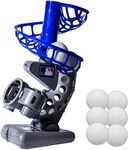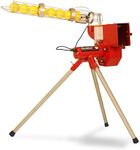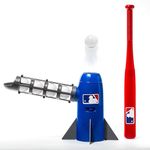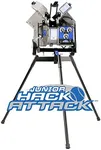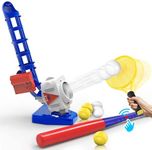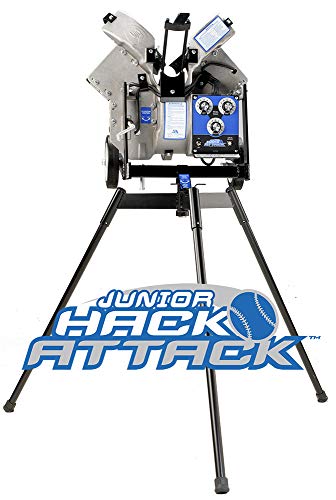Buying Guide for the Best Pitching Machine Kids
Choosing the right pitching machine for kids can be a fun and rewarding experience. The right machine can help young players develop their skills, build confidence, and enjoy the game of baseball or softball. When selecting a pitching machine, it's important to consider several key specifications to ensure it meets the needs of the child and provides a safe and effective training tool. Here are some important factors to consider when choosing a pitching machine for kids.Speed RangeThe speed range of a pitching machine refers to the range of speeds at which the machine can pitch balls. This is important because it allows you to adjust the speed to match the skill level of the child. For younger or beginner players, a lower speed range (e.g., 10-30 mph) is ideal as it helps them get used to hitting the ball. As the child improves, you can increase the speed to provide a greater challenge. Make sure to choose a machine with a speed range that can grow with the child's abilities.
Ball Type CompatibilityPitching machines can be designed to throw different types of balls, such as baseballs, softballs, or even foam or plastic balls. This specification is important because it determines what kind of practice the child will get. For very young children, foam or plastic balls are safer and less intimidating. As they get older and more skilled, you can switch to real baseballs or softballs. Ensure the machine you choose is compatible with the type of ball that is appropriate for the child's age and skill level.
Power SourcePitching machines can be powered by electricity, batteries, or manual operation. The power source is important because it affects where and how you can use the machine. Electric machines need to be plugged in, so they are best for use in a fixed location with access to power. Battery-operated machines offer more portability and can be used in various locations, but you need to keep the batteries charged. Manual machines don't require power and can be used anywhere, but they may require more effort to operate. Choose a power source that fits your intended use and convenience.
AdjustabilityAdjustability refers to the ability to change the angle and height of the pitches. This is important because it allows you to simulate different types of pitches and practice various hitting scenarios. Machines with good adjustability can throw fastballs, curveballs, and other pitch types, and can be set to different heights to match the child's stance and swing. Look for a machine that offers easy and precise adjustments to provide a versatile training experience.
Safety FeaturesSafety features are crucial when selecting a pitching machine for kids. These features can include protective screens, automatic ball feeders, and secure housing for moving parts. Safety is important to prevent injuries and ensure a positive experience for the child. Make sure the machine you choose has adequate safety measures in place, and always supervise young players during use.
PortabilityPortability refers to how easy it is to move and transport the pitching machine. This is important if you plan to use the machine in different locations, such as at home, in the park, or at a practice field. Lightweight and compact machines are easier to carry and set up. Consider how often you will need to move the machine and choose one that fits your portability needs.
